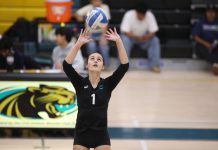There’s a famous story about how Babe Ruth finally became a slugger instead of a pitcher. The way the tale goes is that before the 1919 season, Boston Red Sox manager Ed Barrow confronted his young star and asked him point blank whether he wanted to hit or pitch.
“Well, I certainly like to hit …” Ruth stammered, at which point Barrow supposedly cut him off and made the two-time 20-game winner a full-time outfielder.
Truly, the portly slugger from Baltimore stands alone in the annals of baseball history. He was a very good starting pitcher, going 94-46 with a 2.28 ERA in the regular season, and 3-0 with a sparkling 0.87 ERA in three World Series starts.
But of course he was an even greater hitter – arguably the best of all time – swatting 714 home runs despite not becoming an everyday player until his sixth major league season.
The Barrow story probably isn’t true – I first read it in one of those scandal-free kid’s biographies of ballplayers that are the hidden treasures of elementary school libraries across this land. The kind of books that are long on earnest, “I just wanna win” quotes from a Mickey Mantle and short on the hangovers and floozies that were the real story of his life. In other words, puff pieces that are great for 4th-grade book reports … but for an accurate reading of history? Not so much.
Still, the point of the tale remains. And that point is, your kid ain’t Babe Ruth.
Nobody before or since has been so skillful at both pitching and hitting. Part of the reason is because the Babe was a freak. Another part is that baseball has become increasingly specialized, so that multi-talented athletes are stuck in one role much earlier than in Ruth’s time.
The question becomes, if you’ve got a talented ballplayer in your brood, what specialized role do you want to steer him towards?
I’m here to tell you, hitting.
Why? Because a lot of signs indicate that professional baseball is entering a pitcher’s era. Home runs in major league baseball are down considerably from last season. Who knows how much this has to do with a better performance-enhancing drug policy, how much with better, younger pitching? Who knows whether owners will pull in fences or introduce a livelier ball to get the power numbers up again? Let’s just say that for now, the smart bet is that in years to come there will be far fewer 50-home run seasons by punch-and-judy hitters and far more games won on a timely hit rather than a barrage of three-run bombs.
If this scenario comes to pass, it means there will be a premium placed on hitting talent. You might be surprised to learn that over the past 10 years of the pumped-up power era, it was a lot better to be a marginal pitching prospect than a marginal hitting prospect. That’s because teams quickly learned that power hitters – many likely juiced up – were plentiful, whereas the pitchers to counter them were not. So baseball clubs committed more organizational resources towards finding pitching prospects. Which roughly translates as more pitchers getting a shot than hitters.
But now the supply-and-demand mechanics show signs of reversing. Over the next 10 to 15 years, it’s very possible that hitters will be given more chances to make it in the pros than pitchers – because good, consistent hitting will become the scarce commodity as opposed to good, consistent pitching.
This effect would not just occur at the professional level. It would trickle down to the collegiate and even high school level, because to attract good players college and high school programs must show that they produce pro prospects. If more hitters get pro opportunities, those programs will in turn start to favor hitters over pitchers.
Of course, excellent pitching prospects will always be given a shot to prove themselves in any era. But if you’ve got a youngster who is talented with both the bat and on the mound, and who you think has a legitimate shot at a collegiate or even pro career, you might want to think about think about all this when he faces a choice between focusing on hitting or pitching.













